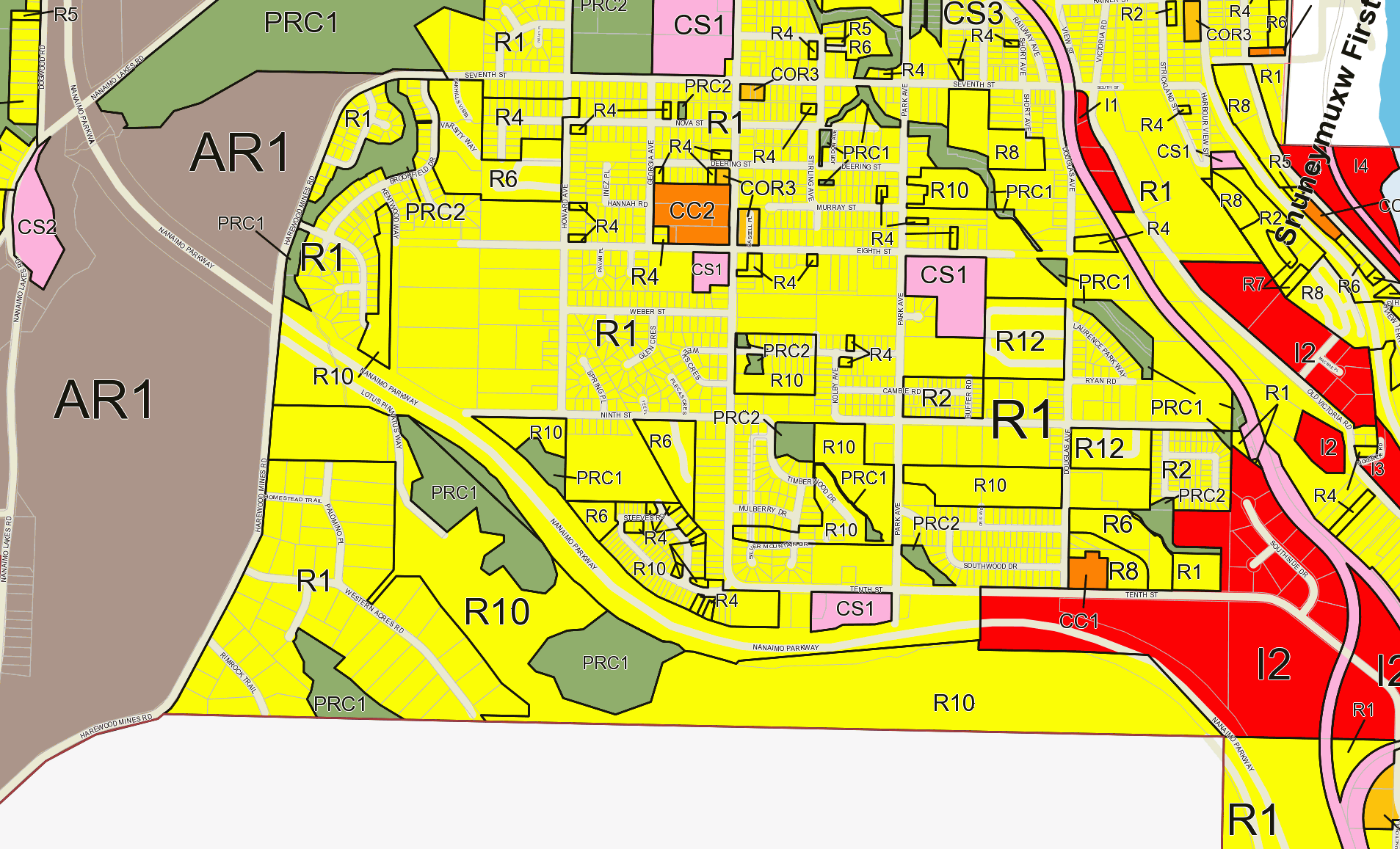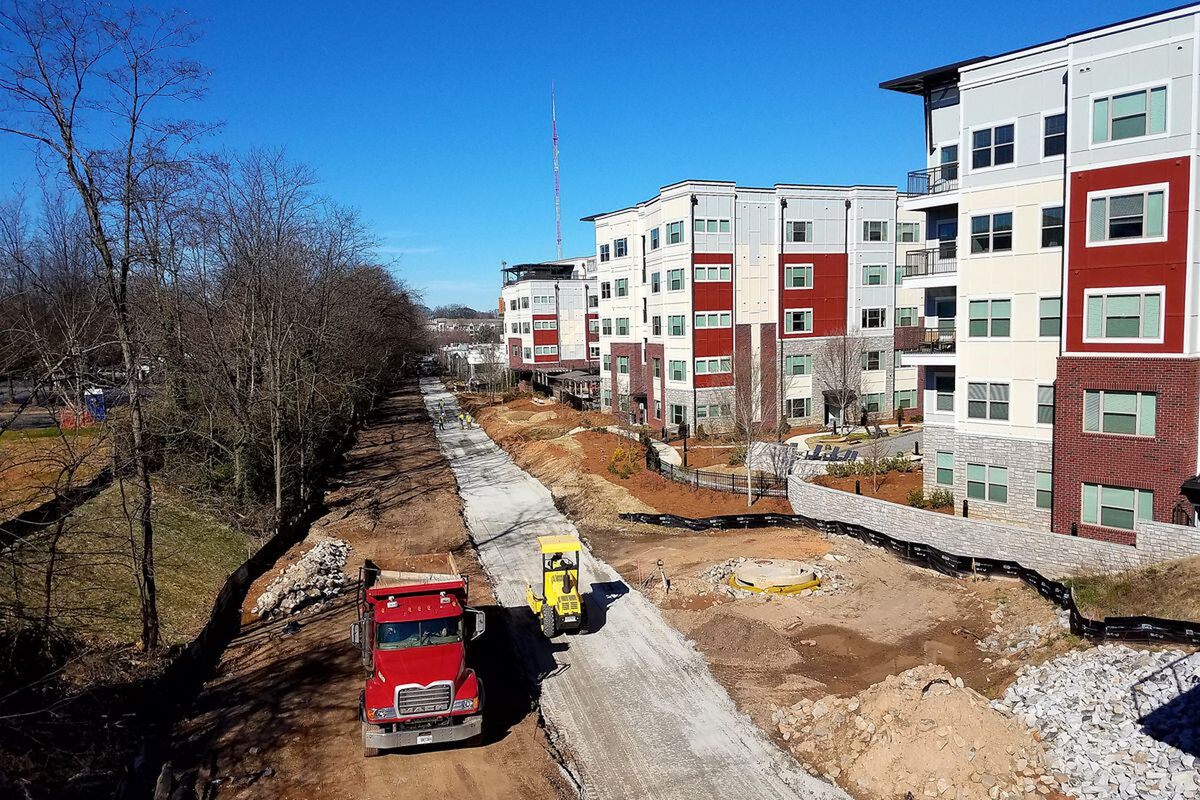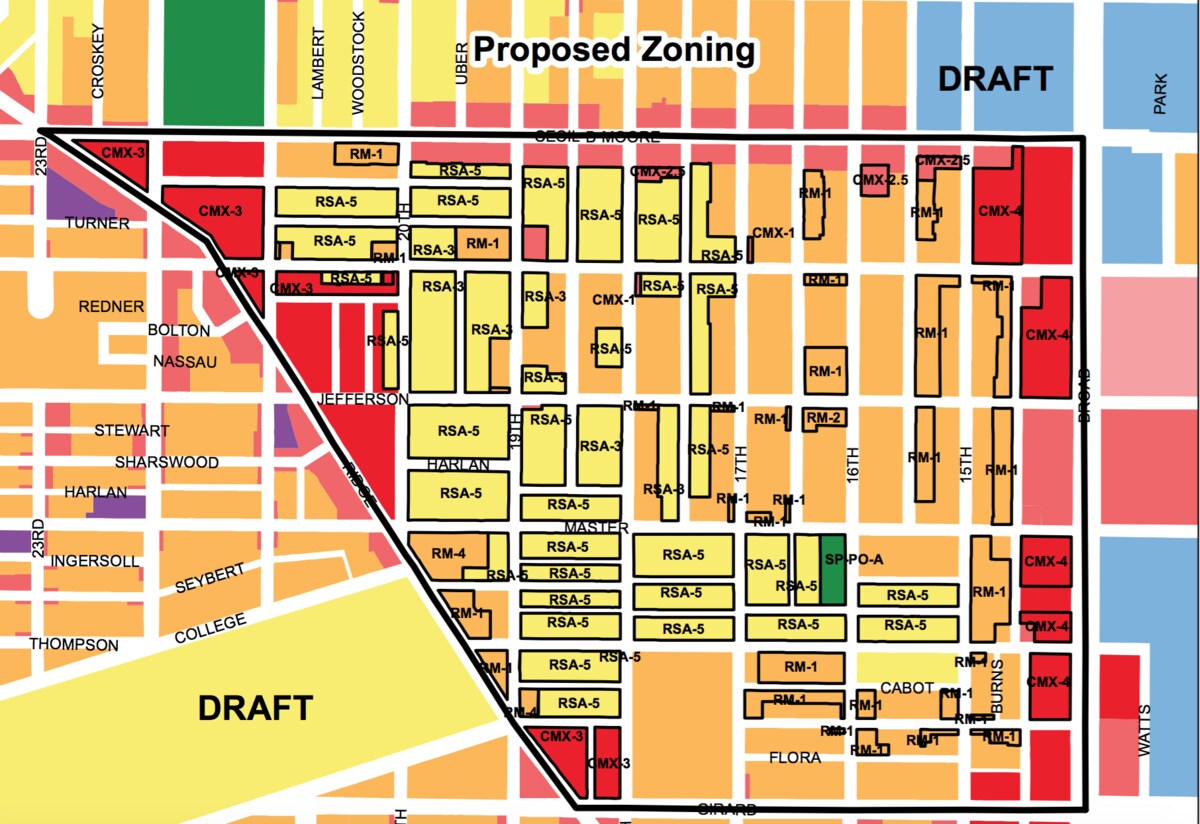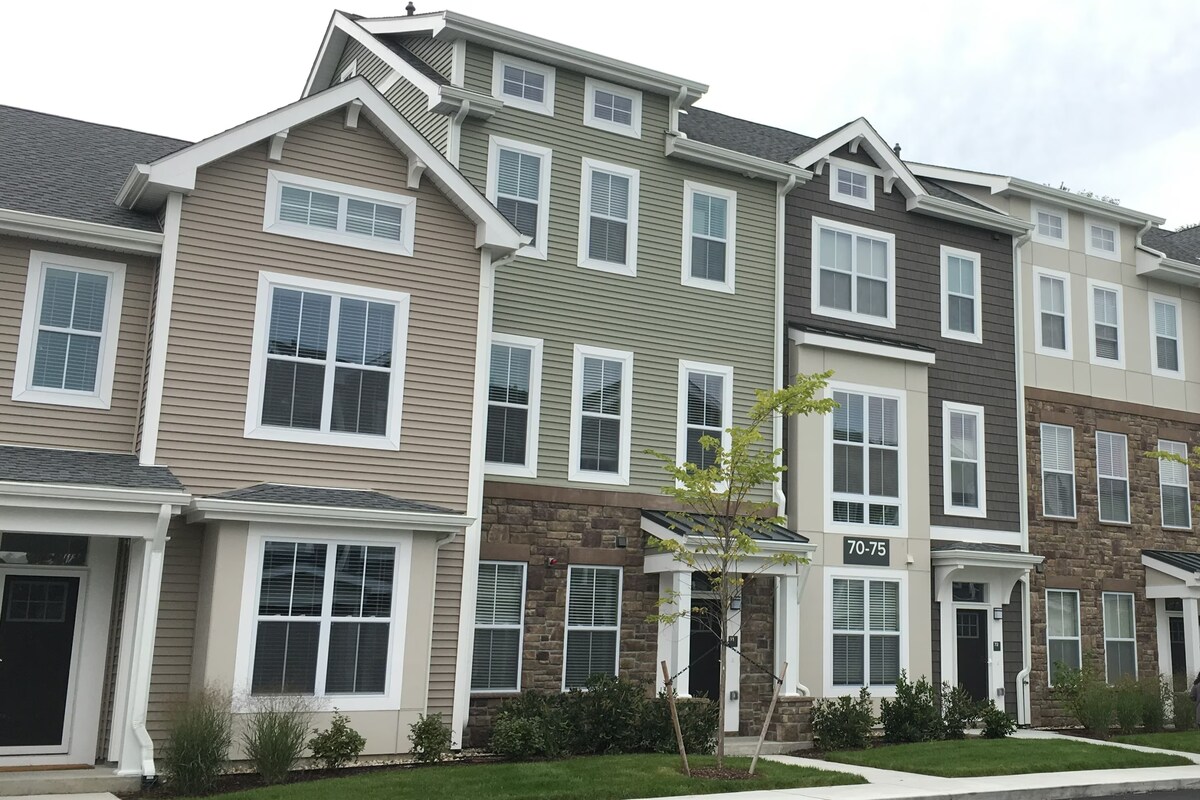Home>diy>Planning & Engineering>What Is Spot Zoning In Real Estate


Planning & Engineering
What Is Spot Zoning In Real Estate
Modified: October 20, 2024
Discover what spot zoning is in real estate and its impact on planning and engineering. Learn the importance of understanding this concept in the field of urban development.
(Many of the links in this article redirect to a specific reviewed product. Your purchase of these products through affiliate links helps to generate commission for Storables.com, at no extra cost. Learn more)
Introduction
When it comes to real estate development, zoning plays a crucial role in determining how land can be used. Zoning regulations are put in place to ensure that neighborhoods maintain a certain level of consistency and functionality. However, there are instances when a specific parcel of land is given special treatment, deviating from the standard zoning regulations. This is known as spot zoning.
Spot zoning refers to the process of designating a particular area or property within a larger zoning district with unique zoning regulations. In other words, it allows for different rules and regulations to be applied to a specific piece of land within a larger designated zone.
The concept of spot zoning can be a complex and controversial topic within the real estate industry, as it often involves granting privileges or exceptions to certain properties or developers. In this article, we will delve deeper into the definition of spot zoning, explore its purpose, provide examples, discuss criticisms, and examine the legal considerations associated with it.
Key Takeaways:
- Spot zoning allows for exceptions in zoning regulations, catering to unique development needs and economic growth. However, it can disrupt neighborhood consistency and faces legal scrutiny for fairness and transparency.
- While spot zoning can address specific needs, it may lead to favoritism, property value concerns, and strain on infrastructure. Legal compliance and community engagement are crucial for its success.
Definition of Spot Zoning
Spot zoning refers to a zoning practice where a specific property, or a small area within a larger zoning district, is granted different zoning regulations from those applicable to the surrounding properties. While zoning regulations typically dictate how land can be used, including restrictions on building height, setback requirements, and permissible land uses, spot zoning allows for exceptions to these regulations on a case-by-case basis.
Spot zoning can be implemented for various reasons. It may occur when there is a need to accommodate a unique development proposal that does not fit within the existing zoning requirements. For example, if a developer wants to build a commercial property in an area that is primarily zoned for residential use, spot zoning may be used to grant permission for the commercial endeavor.
This special treatment of a particular property can also be a result of political or economic factors. In some cases, influential individuals or organizations may successfully lobby for favorable zoning treatment for their properties, leading to spot zoning designation. Likewise, economic development initiatives or revitalization projects may warrant the granting of special zoning rights to redevelop or repurpose specific areas.
Spot zoning can take a variety of forms, including rezoning a small area within an existing zoning district, creating a new zoning district specifically for the designated property, or granting conditional-use permits that allow certain activities within a particular property.
It is essential to note that spot zoning can be controversial, as it can result in inconsistencies and disrupt the overall integrity of a neighborhood or zoning district. It can generate conflicts with surrounding property owners who may feel that their properties are adversely affected or that unequal treatment is being given to the selected property.
Purpose of Spot Zoning
The purpose of spot zoning is to address unique circumstances or specific development needs that cannot be accommodated within the existing zoning regulations. It provides flexibility in land use planning and allows for exceptions or modifications to the standard zoning rules for a particular property or area. Here are some of the main purposes of spot zoning:
1. Encouraging Economic Development: Spot zoning can be used as a tool to stimulate economic growth and attract businesses to specific areas. By granting special zoning privileges to a property, such as allowing commercial or mixed-use development in an area primarily zoned for residential use, local authorities can create opportunities for job creation and increased revenue through increased commercial activity.
2. Preserving Historic or Cultural Heritage: There may be instances when a property has significant historical or cultural value that warrants special zoning considerations. Spot zoning can be used to protect and preserve such properties, allowing for adaptive reuse or restoration projects that maintain the property’s unique character while still complying with zoning regulations.
3. Promoting Urban Revitalization: In deteriorating urban areas or brownfield sites, spot zoning can be employed to encourage redevelopment and revitalization. By allowing for more flexible land use regulations or higher density developments in these areas, spot zoning can attract developers and investors to bring new life to neglected or underutilized parcels of land.
4. Addressing Infrastructure Needs: Spot zoning can be used to cater to specific infrastructure requirements. For example, if there is a need for a new school or hospital in a residentially zoned area, spot zoning may allow for the construction of such facilities even if they do not conform to the regular zoning regulations.
5. Supporting Special Projects: Spot zoning can accommodate unique development projects that may have substantial benefits for the community, such as stadiums, convention centers, or research facilities. By designating specific areas for these projects, spot zoning can help facilitate their development while still maintaining overall zoning integrity.
While the intentions behind spot zoning may be well-meaning, it is crucial to carefully consider the potential impacts on the surrounding properties and ensure transparency and fairness in the decision-making process.
Examples of Spot Zoning
Spot zoning can be observed in various scenarios where specific properties or areas are granted special zoning treatment. Here are a few examples:
1. Mixed-Use Development in a Residential Zone: In a predominantly residential neighborhood, spot zoning may permit the development of a mixed-use building that combines residential units with commercial spaces. This allows for a blend of residential and commercial activities, providing convenience and amenities to the local community.
2. Height Variations for Landmarks and Skyscrapers: Spot zoning can make exceptions to height restrictions for iconic landmarks or high-rise buildings in areas where the standard zoning regulations specify lower building heights. This allows the construction of buildings that contribute to the city’s skyline or have significant historical or cultural value.
3. Zoning for Industrial Areas near Residential Neighborhoods: In some cases, spot zoning may be used to establish industrial zones adjacent to or in the vicinity of residential areas. This allows for the separation of potentially noisy or polluting industrial activities from residential zones while supporting local economic development.
4. Rezoning for Affordable Housing Projects: Spot zoning can be utilized to designate specific areas for affordable housing developments. These projects aim to address the need for affordable housing in communities where the current zoning regulations may not adequately accommodate such initiatives.
5. Conditional-Use Permits for Specific Activities: Spot zoning may grant conditional-use permits that allow certain activities within a designated property. For example, a conditional-use permit may allow a daycare center to operate within a residential zone or a restaurant to open in an area primarily zoned for retail spaces.
These examples highlight different situations where spot zoning is applied to address specific needs or capitalize on unique opportunities. While these exceptions can bring benefits to the community, it is crucial to carefully consider the potential impacts on surrounding properties and ensure that spot zoning decisions are made in a fair and transparent manner.
Spot zoning can be challenged in court if it is found to be arbitrary or discriminatory. It’s important to understand local zoning laws and regulations before purchasing or developing a property.
Criticisms of Spot Zoning
While spot zoning can serve as a tool for addressing specific needs or encouraging development, it also faces criticisms for several reasons. Here are some of the main criticisms of spot zoning:
1. Lack of Consistency: Spot zoning can disrupt the overall cohesiveness and consistency of a neighborhood or zoning district. By granting special privileges to certain properties, it can create inconsistencies in land use regulations and adversely impact the surrounding properties. This lack of uniformity can lead to confusion and potential conflicts among property owners.
2. Favoritism and Inequality: Critics argue that spot zoning may be susceptible to favoritism and unequal treatment. It may create an impression that influential individuals or organizations can receive special zoning rights, leaving others at a disadvantage. This perception can undermine public trust in the zoning process and raise concerns about fairness and transparency.
3. Negative Impact on Property Values: Spot zoning can have negative consequences for neighboring properties. Changes in land use and increased density resulting from spot zoning may lead to decreased property values for nearby homes or businesses. This loss in property value can be a source of contention and frustration for affected property owners.
4. Overburdening of Infrastructure: Introducing spot zoning for specific developments or land uses without adequate consideration of infrastructure capacity can strain existing infrastructure systems. It may lead to increased traffic congestion, pressure on utilities, and a burden on public services, potentially impacting the quality of life for residents in the area.
5. Lack of Long-Term Planning: Critics argue that spot zoning tends to focus on immediate needs and individual projects rather than considering long-term planning and community-wide impacts. This short-term approach may result in developments that do not fit within a broader vision for the area and fail to account for future growth and changing needs.
It is important to address these criticisms and mitigate potential negative impacts when implementing spot zoning. Engaging in comprehensive community planning, ensuring transparent decision-making processes, and carefully considering the long-term consequences are essential to alleviate concerns and garner public support for spot zoning initiatives.
Legal Considerations of Spot Zoning
Spot zoning, like any zoning practice, is subject to legal considerations to ensure that it complies with applicable laws and regulations. Here are some of the main legal considerations associated with spot zoning:
1. Equal Protection Clause: One of the legal challenges of spot zoning is whether it violates the Equal Protection Clause of the Fourteenth Amendment of the United States Constitution. The Equal Protection Clause prohibits the government from treating similarly situated individuals or properties differently without a rational basis. To withstand legal scrutiny, spot zoning decisions need to demonstrate a legitimate government interest and a rational basis for the disparate treatment.
2. Comprehensive Plan Alignment: Spot zoning should align with the goals and objectives outlined in the municipality’s comprehensive plan or master plan. The comprehensive plan serves as a blueprint for land use and development, and spot zoning decisions should not undermine the overall vision and objectives established in the plan.
3. Public Notice and Due Process: It is crucial to provide proper public notice and opportunity for public input during spot zoning processes. This includes notifying adjacent property owners and holding public hearings to allow for public comment and feedback. Ensuring transparency and adhering to due process requirements helps protect against legal challenges and promotes fairness in the decision-making process.
4. Consistency with Zoning Codes: Spot zoning should meet the requirements and standards set forth in the local zoning codes. It should be based on objective criteria and support the general welfare of the community. Spot zoning decisions that deviate significantly from the zoning codes or lack clear justifications may face legal challenges based on arbitrary and capricious claims.
5. Substantial Evidence Requirement: Spot zoning decisions should be supported by substantial evidence that justifies the need for the special treatment and demonstrates that it is in the public interest. This evidentiary requirement helps ensure that the spot zoning decision is based on legitimate reasons and that it considers the impacts on the surrounding area and community as a whole.
6. Balancing Test: Courts often employ a balancing test to evaluate spot zoning cases. This test weighs the public interest served by the spot zoning decision against the impact on neighboring properties and the overall zoning scheme. A well-documented balancing analysis can help support the legality of spot zoning decisions.
7. Judicial Scrutiny: Spot zoning decisions may face judicial review to assess their validity. Courts may evaluate the legality of spot zoning based on factors such as the degree of spot zoning, the impact on neighboring properties, the presence of a rational basis, and consistency with land use planning goals.
To ensure compliance with legal requirements, municipalities should consult their legal counsel, follow established procedures, provide justifications for spot zoning decisions, and create a transparent and fair decision-making process.
Conclusion
Spot zoning plays a significant role in the realm of real estate development by allowing for exceptions and special treatment for specific properties or areas within larger zoning districts. While it can serve as a tool to address unique circumstances or encourage economic development, spot zoning is not without criticisms and legal considerations.
Spot zoning can disrupt the overall cohesiveness and consistency of a neighborhood or zoning district, leading to concerns of favoritism and inequality. It may also have negative impacts on property values and strain infrastructure systems. Critics argue that spot zoning lacks long-term planning and may prioritize individual projects over the broader community vision.
From a legal standpoint, spot zoning must adhere to constitutional principles, including equal protection and due process. It should align with the municipality’s comprehensive plan, comply with zoning codes, and be supported by substantial evidence and a rational basis for disparate treatment. Judicial scrutiny may be applied to evaluate the legal validity of spot zoning decisions using balancing tests that consider competing interests.
Ultimately, the success and acceptance of spot zoning depend on careful consideration of its purpose, thorough planning, transparent decision-making processes, and comprehensive community engagement. Striking a balance between accommodating unique needs and maintaining the integrity of zoning regulations is essential to ensure fairness and uphold the public interest.
By understanding the definition, purpose, examples, criticisms, and legal considerations of spot zoning, stakeholders in real estate development can navigate the complexities associated with spot zoning more effectively. A thoughtful and informed approach to spot zoning can help create vibrant and sustainable communities that meet the diverse needs of their residents and businesses.
Frequently Asked Questions about What Is Spot Zoning In Real Estate
Was this page helpful?
At Storables.com, we guarantee accurate and reliable information. Our content, validated by Expert Board Contributors, is crafted following stringent Editorial Policies. We're committed to providing you with well-researched, expert-backed insights for all your informational needs.















0 thoughts on “What Is Spot Zoning In Real Estate”